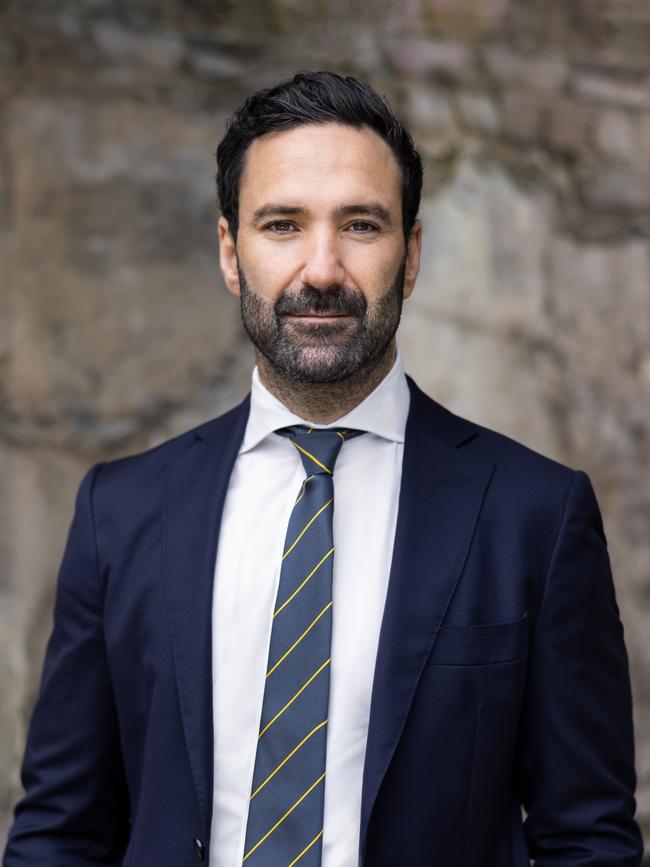Canva reaps dividends from $50m developer fund as growth explodes across app marketplace
The graphic design darling wants to grow from 190 million users to 1 billion, and a free-to-use developer marketplace is emerging as a cornerstone for the strategy.

Canva’s free-to-use marketplace is forming a key plank in the graphic design darling’s ambition to reach one billion active monthly users, with the number of apps available on the platform surging by more than 18 times since it was launched a year ago.
The marketplace allows developers to use Canva’s tools to create new apps aimed at spurring creativity and enhancing productivity by allowing even unskilled people to draft visual communications.
The $40bn company has been focused on delivering products for professional designers — via its acquisition of Photoshop rival Affinity — and those with little to no training ahead of a much-hyped potential US listing.
The strong growth across its app marketplace comes a year after it unveiled a $50m developer fund to spark more innovation across the platform.
Anwar Haneef, head of ecosystem at Canva, said it was about getting Canva’s tools into the hands of more people.
It currently has almost 190 million active users — a number it plans to lift to one billion — as it targets the more lucrative enterprise market, and generates more than $2.3bn in annual revenue.

“A lot of what we’re doing to get to one billion users is we really want to make sure that anytime there is an intent by anyone to design, we are there, we are available,” Mr Haneef said.
“Our vision is to be the most pluggable on the planet. We have 190 million users and there are 900,000, 800,000 users out there that are not on the platforms that we are directly in, and we want to be there.”
For developers, Mr Haneef said they were able to benefit by tapping into Canva’s user base, allowing them to record “overnight growth”, with one company in Europe hitting 100,000 users within six weeks of launch.
“I live in the Bay Area in the US, and I’ve spoken with all the start-up founders who have raised millions of dollars in start-up funding, and they’re saying, ‘hey, the first thing we’re going to do is create a mobile app’, for instance. And my question to them is like, how many millions are you going to spend to get anyone to use your mobile app?”

Ray White, Australia’s biggest real estate group, has been integrating Canva into its tech stack after it discovered its more than 1200 staff across 800 offices were creating marketing material using personal accounts, leading to inconsistencies, such as incorrect fonts and brand colours.
Head of marketing Todd Alexander said having a standardised enterprise-grade solution had solved the problem and so far lifted productivity across the network by up to 20 per cent.
“The challenge, I guess with any sector, is there’s so much prop tech, there’s so much tech noise going around, and sometimes you can be seduced by having a different pilot for this, a different pilot for that,” Mr Alexander said.
“Up until we launched Canva, we had five different marketing platforms for our agents and administrators to use, and it’s just inefficient. So we’ve been able to consolidate a couple with Canva for enterprise.
“The ultimate is just to have one place to be able to do everything, create social media content, build a signboard, create a press ad for The Australian, book it and then create the artwork for The Australian, as an example. That’s the dream. We’re slowly getting there, but that’s the ultimate ambition for us.”
One out of 10 active developers on Canva’s marketplace come from Australia, making it the third most active market globally.

It comes as Canva finalised a $3.9bn share sale in April, making some of its staff instant millionaires.
The share sale was oversubscribed by 150 per cent on its initial target, reaping $US2.4bn ($3.6bn) and available to all employees who had been awarded shares which had vested.
It has also redesigned its entire platform to take on the lucrative enterprise market and turbocharge, lifting the number of paying subscribers who use its products.
Canva launched a suite of new products at its annual Create showcase in Los Angeles — the first time it has moved the event from Australia — last month.
The new offerings include Canva Courses, which allows companies to make their own training modules; Canva Enterprise, a product which builds on its Pro and Teams versions; and Canva Work Kits, a set of tools and templates for different teams within an organisation; as well as significant upgrades to its Visual Suite and Magic Studio.
Head of product Robert Kawalsky said Canva already counted 95 per cent of Fortune 500 companies as customers, which had been achieved mainly through “organic growth”, with businesses progressing from Canva’s free platform to its subscription versions.
It comes ahead of a potential Nasdaq listing, which co-founder and chief product officer Cameron Adams said would be a “natural evolution” for the company — which is valued at $US26bn ($39bn).
But, he and his co-founders Melanie Perkins and Cliff Obrecht won’t be rushed.






To join the conversation, please log in. Don't have an account? Register
Join the conversation, you are commenting as Logout